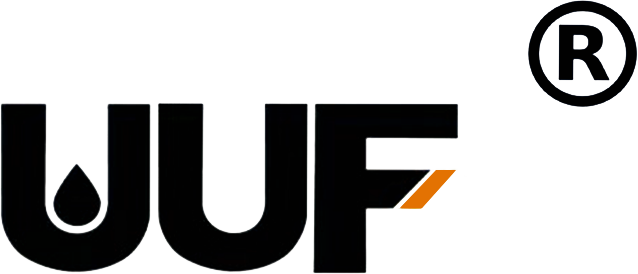The Role of National Oil Seals in Preventing Leakage: A Comprehensive Guide
Time:
2025-03-24
The Role of National Oil Seals in Preventing Leakage Introduction to National Oil Seals National Oil Seals are essential components in automotive engineering, specifically designed to prevent fluid leakage in various systems. These seals are crucial in maintaining the efficiency of engines and transmission systems. A reliable oil seal can significantly enhance vehicle performance, reduce maint
The Role of National Oil Seals in Preventing Leakage
Introduction to National Oil Seals
National Oil Seals are essential components in automotive engineering, specifically designed to prevent fluid leakage in various systems. These seals are crucial in maintaining the efficiency of engines and transmission systems. A reliable oil seal can significantly enhance vehicle performance, reduce maintenance costs, and extend the lifespan of automotive components.
Understanding Oil Seals: What Are They?
Oil seals, also referred to as lip seals or rotary seals, are mechanical devices used to seal the passage between two parts, preventing the leakage of lubricants or other fluids. They are engineered to withstand high temperatures and pressures while maintaining a robust barrier against contaminants. Their structure generally includes a flexible lip that adapts to the surface of the rotating shaft, ensuring a tight seal.
The Structure of National Oil Seals
National Oil Seals are typically made of durable materials such as rubber, silicone, or polyurethane. Their design incorporates various elements that enhance performance:
- **Body:** The main component that houses the sealing lip.
- **Sealing Lip:** This flexible part makes contact with the shaft, providing the primary sealing action.
- **Spring:** Often used to apply consistent pressure on the sealing lip, ensuring a tight fit.
- **Dust Lip:** A secondary barrier that prevents dirt and debris from entering the sealing area.
Types of National Oil Seals
Different applications require specific types of oil seals. Understanding these variations will help in selecting the right seal for your needs.
- **Single Lip Seals:** These are the most common, featuring one sealing lip and are ideal for applications where contamination is minimal.
- **Double Lip Seals:** Designed with two sealing lips, these seals provide extra protection against dirt and moisture, perfect for harsh environments.
- **Spring-Loaded Seals:** Incorporating a spring to maintain pressure on the sealing lip, these seals are suitable for high-speed applications.
- **Specialty Seals:** Custom-designed seals cater to unique requirements in specific industries, such as automotive, aerospace, and manufacturing.
The Importance of National Oil Seals in Automotive Systems
National Oil Seals play a vital role in various automotive systems. Their function extends beyond just preventing leakage; they also contribute to overall vehicle efficiency and durability.
Preventing Fluid Leakage
The primary function of oil seals is to prevent fluid leakage from engine components, such as crankshafts and camshafts. Leakage can lead to several issues, including:
- **Reduced Lubrication:** When oil leaks out, it compromises the lubrication of moving parts, leading to increased friction and wear.
- **Environmental Concerns:** Oil spills can harm the environment and lead to costly clean-up efforts.
- **Performance Issues:** Fluid loss can result in decreased engine performance and efficiency.
Enhancing Longevity of Components
By effectively sealing critical components, National Oil Seals enhance the longevity of various automotive parts. Reduced exposure to contaminants minimizes wear and tear, leading to longer service life and lower maintenance costs.
Applications of National Oil Seals in Vehicles
National Oil Seals are employed in a wide range of automotive applications, highlighting their versatility and importance.
Engine Components
In engines, oil seals are essential for sealing the crankshaft and camshaft. They prevent oil from leaking out of these components, ensuring efficient operation and optimal performance.
Transmission Systems
Oil seals in transmission systems serve a similar purpose, sealing the input and output shafts to prevent fluid leakage. This is crucial for maintaining the proper functioning of automatic and manual transmissions.
Wheel Bearings and Axles
Seals are also critical in wheel bearings and axle assemblies. They keep lubricants contained within the bearings while preventing dirt and moisture from entering, ensuring smooth operation.
Choosing the Right National Oil Seal
Selecting the appropriate National Oil Seal involves considering several factors:
Compatibility with Fluid Types
Different fluids have varying chemical properties, which can affect seal material performance. Ensure the chosen seal material is compatible with the fluids used in your application.
Temperature and Pressure Ratings
Consider the temperature and pressure conditions under which the seal will operate. High-performance applications may require seals that can withstand extreme conditions.
Size and Dimensions
Accurate measurements are crucial for effective sealing. Ensure that the seal fits perfectly within its designated space to prevent leakage.
Best Practices for Installing National Oil Seals
Proper installation is critical for the effectiveness of National Oil Seals. Following best practices can enhance seal performance and longevity.
Pre-Installation Checks
Before installation, inspect the seal and the mating surfaces for any debris or damage. Ensure that the surfaces are clean and free of sharp edges that could damage the seal.
Correct Insertion Techniques
When installing the seal, use appropriate tools to avoid distortion. Apply a light coat of lubricant to the sealing lip to facilitate smooth insertion.
Post-Installation Inspection
After installation, conduct a thorough inspection to verify that the seal is seated correctly. Check for any signs of leakage during initial operation.
Common Issues with Oil Seals and How to Address Them
Despite their robust design, oil seals can encounter issues that may affect their performance.
Leakage Problems
If you notice any signs of leakage, it may indicate a faulty seal. Check for proper installation, and if necessary, replace the seal to restore functionality.
Wear and Tear
Over time, seals may wear out due to exposure to heat, pressure, and contaminants. Regular maintenance and timely replacement can prevent more significant issues.
Frequently Asked Questions (FAQs)
1. What is the lifespan of a National Oil Seal?
The lifespan of a National Oil Seal depends on several factors, including the application, operating conditions, and maintenance. Generally, they can last anywhere from several years to over a decade.
2. How can I tell if my oil seal is leaking?
Signs of a leaking oil seal include visible oil spots around the engine or transmission, a drop in fluid levels, or unusual noises coming from the sealed component.
3. Can I replace an oil seal myself?
If you have basic mechanical skills and the right tools, you can replace an oil seal yourself. However, if you're unsure, it's best to consult a professional mechanic.
4. What materials are used to make National Oil Seals?
National Oil Seals are commonly made from materials like rubber, silicone, and polyurethane, each chosen for its specific properties suitable for different applications.
5. Are all oil seals the same size?
No, oil seals come in various sizes and dimensions. It's crucial to select the correct size that fits your specific application to ensure effective sealing.
Conclusion
National Oil Seals are indispensable components in automotive systems, playing a vital role in preventing leakage and enhancing the overall performance of vehicles. By understanding their function, types, and best practices for installation, vehicle owners can ensure their automotive systems operate efficiently and effectively. Regular maintenance and timely replacement of oil seals can prevent costly repairs and prolong the lifespan of critical vehicle components. Investing in quality National Oil Seals is not just an option; it's a necessity for any vehicle owner seeking reliable performance and longevity.
Keyword:
national oil seal


















